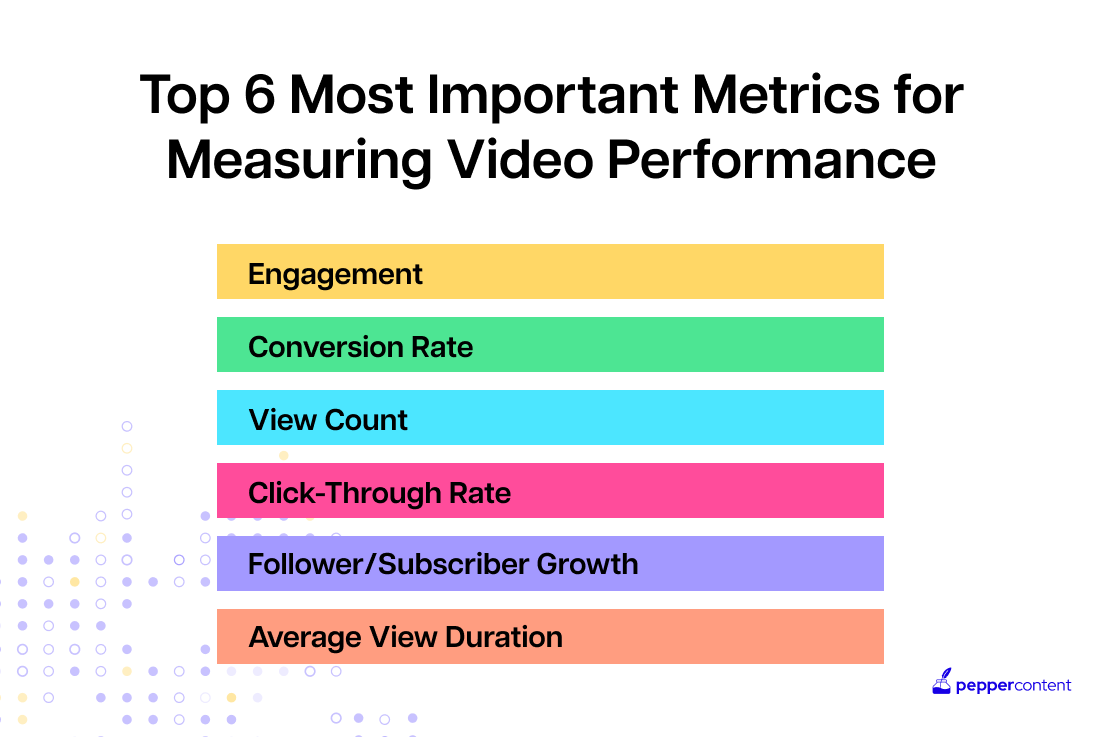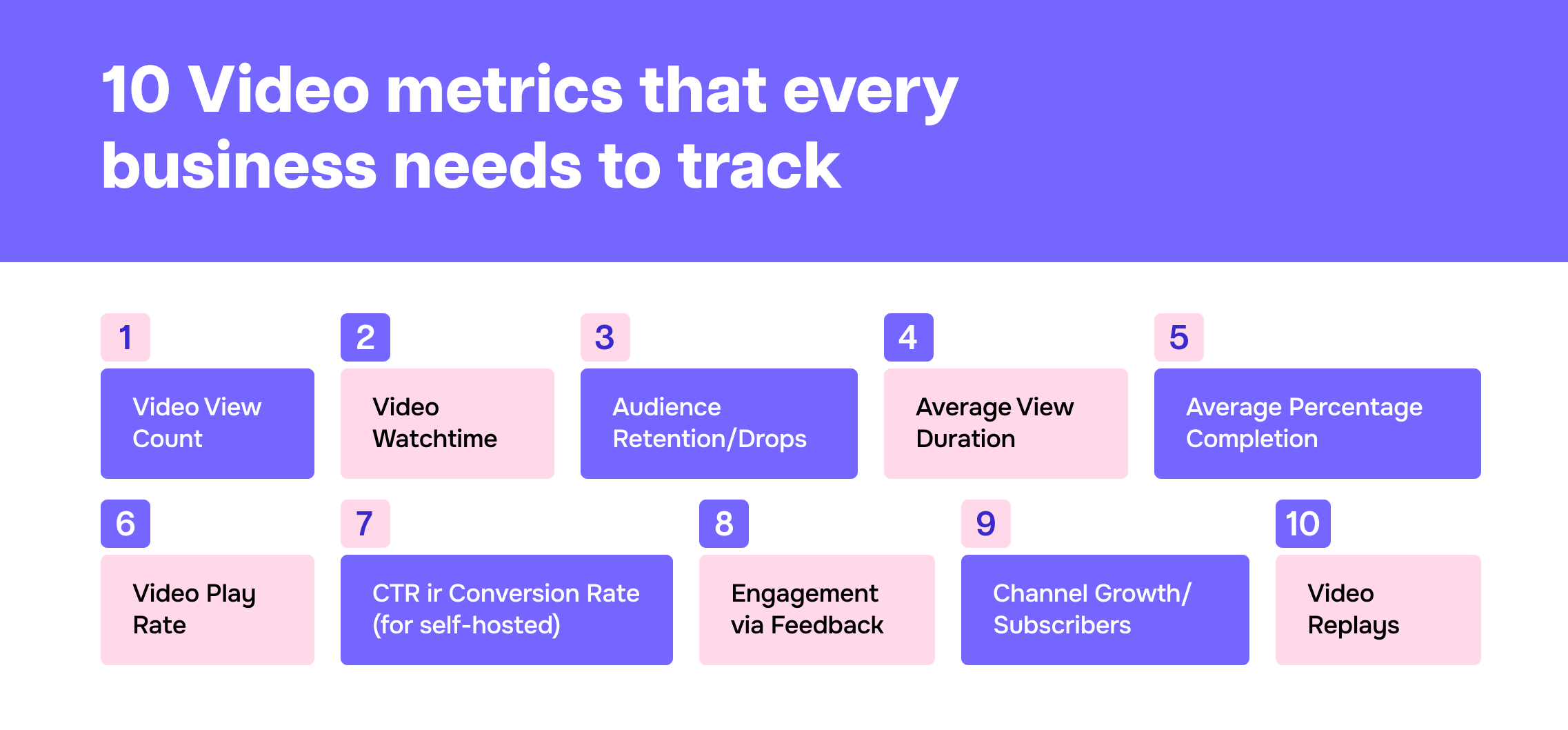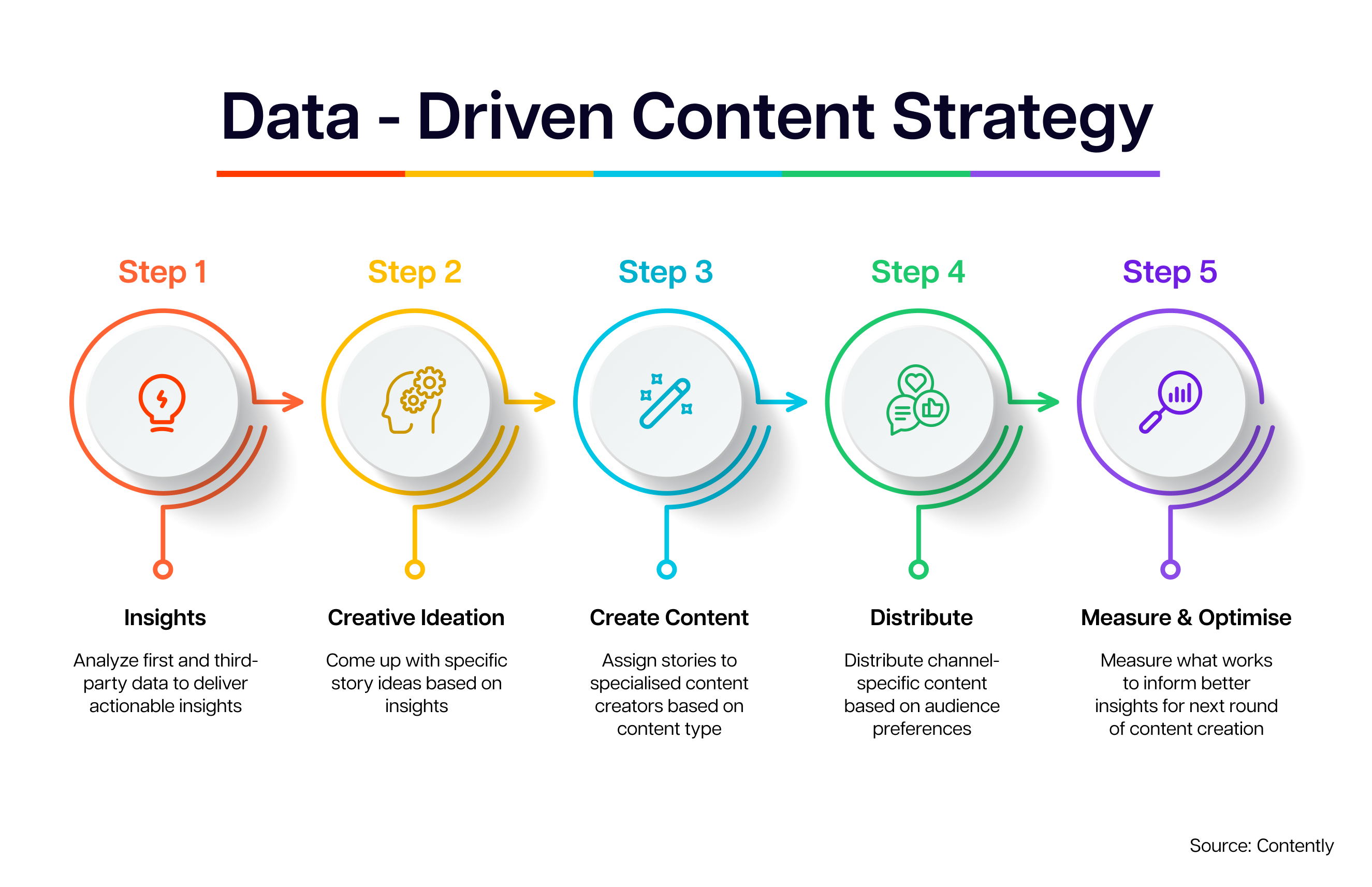Video Analytics: Measuring And Analyzing Performance Metrics For Video Campaigns

Picture this: you’ve just spent weeks crafting the perfect video campaign for your brand. The visuals are stunning, the storytelling is on point, and the message is crystal clear. But here’s the catch – how do you know if your video is actually making an impact? How do you measure its success or identify areas for improvement?
Enter video analytics, the superpower of the modern marketer. By harnessing the power of data and metrics, you can unlock valuable insights to optimize your video marketing strategy. Key performance indicators (KPIs) play a crucial role in this process, helping you gauge the effectiveness of your videos at different stages of the marketing funnel.
Whether you’re aiming to increase brand awareness, drive conversions, or boost customer engagement, measuring and analyzing video performance metrics is the key to achieving your goals. It allows you to make data-driven decisions, understand what resonates with your audience, and iterate on your campaigns.
So let’s dive into the world of video content KPIs and learn how they can help take your video marketing strategy to new heights.
Understanding Video Content KPIs
Video content KPIs are like a compass that guides you through the vast sea of video marketing. They provide quantifiable metrics that help evaluate the success of your videos and identify areas for improvement. But it’s not just about picking any random KPI; it’s about choosing the right ones based on your video’s goals.

For example, if you’re running a product launch campaign for your e-commerce brand, views, and click-through rates (CTRs) would be crucial KPIs. A higher number of views combined with a high CTR indicates strong engagement and potential sales conversions. On the other hand, if you’re an educational platform aiming to increase user retention, watch time would serve as a vital metric since longer watch times suggest higher engagement levels.
Different types of videos require specific KPIs based on their goals. For instance, if you’re creating an explainer video to introduce a new product, the KPIs you’d focus on might include average watch time, engagement rate, and conversion rate. However, for a brand awareness video, you might prioritize metrics like reach, impressions, and social shares.
The key is to align your KPIs with your video’s objectives and track them consistently. This will not only help you measure success but also provide insights to optimize your future video campaigns. So buckle up and get ready to dive deep into the world of video content analytics!
Measuring Key Video Metrics
Now that we understand the significance of video content KPIs, let’s dive into the essential metrics that help measure and evaluate the performance of video campaigns. These metrics serve as guideposts along the marketing journey, providing valuable insights into audience engagement and campaign success.

1. Views
One of the most basic yet essential metrics to measure is “views.” It indicates the number of times a video has been watched by viewers. Higher view counts suggest a larger reach and potential for brand exposure. However, it’s important to note that views alone don’t necessarily translate into successful campaigns. To dig deeper, we need to analyze other key metrics.
2. Watch time
Next up is “watch time,” which measures the total amount of time viewers spend watching a video. This metric helps determine how engaging and captivating your video content is. A longer watch time suggests that viewers are highly engaged and find value in your videos, while shorter watch times may indicate a need for improvement in content or storytelling.
3. Engagement rate
The engagement rate is another crucial metric to consider. It encompasses various factors like likes, comments, shares, and click-through rates (CTRs). These metrics provide insights into how well your videos are resonating with the audience and encourage interaction or action.
4. Conversion rate
Conversion rate measures the number of viewers who take a desired action after watching a video, such as making a purchase or subscribing to a newsletter. This metric helps evaluate the effectiveness of your video in driving actual business results.
Real-life examples demonstrate how measuring these key metrics can optimize video campaigns. Take GoPro, for instance. By analyzing their watch time data, they discovered that their viewers were most engaged when watching extreme sports videos. Armed with this insight, they created more similar content, resulting in increased engagement and brand loyalty.
Leveraging Video Analytics Platforms
Measuring video performance metrics manually can be tedious and time-consuming. That’s where video analytics platforms come to the rescue! These platforms offer a range of features and benefits that simplify the process and provide marketers with detailed insights into their video campaigns.
Popular video analytics platforms have advanced features like heatmaps, which visually represent viewer engagement by highlighting the sections of a video where viewers are most engaged or tend to drop off. This information allows marketers to identify the strengths and weaknesses of their videos, enabling them to optimize content and drive better engagement.

Viewer attention spans are another critical aspect that can be measured using video analytics platforms. By understanding how long viewers stay engaged with a video, marketers can determine the optimal length for their content and make informed decisions regarding editing or trimming.
Additionally, these platforms provide valuable demographic data about your viewers, such as geographic location and age group. This information helps in targeting specific audiences more effectively and tailoring content accordingly.
By harnessing the power of video analytics platforms, marketers can unlock valuable data-driven insights that drive optimization and success in their video campaigns.
Types of Video Analytics
Video analytics offer marketers a wealth of data to gain insights into their audience’s behavior, preferences, and engagement levels. By understanding the types of video analytics available, marketers can tailor their strategies to specific target audiences and maximize the impact of their campaigns.
Playback location data
One type of video content analytics is playback location data, which provides valuable information about where viewers are watching videos. This data allows marketers to identify the platforms or channels that are most effective in reaching their target audience. For example, a brand targeting Gen Z may find that their videos are predominantly watched on mobile devices, indicating a need to optimize videos for mobile viewing and focus more on platforms like Instagram or TikTok.
Demographics
Another necessary type of video analytics is user demographics. This data provides insights into the characteristics of the audience watching the videos, such as age, gender, location, and interests. By analyzing user demographics, marketers can create targeted content that resonates with their specific audience segments. For instance, if a beauty brand finds that a majority of its viewers are young females interested in skincare, it can create videos tailored to this demographic’s interests and needs.
Engagement
Engagement metrics are also crucial in video content analysis. These metrics include likes, comments, shares, and click-through rates. They indicate how viewers are interacting with the video content and can help marketers gauge the level of engagement and interest generated by their videos. By tracking engagement metrics across different videos, marketers can identify what types of content resonate best with their audience and refine their strategies accordingly.
Tracking Video Metrics Across Channels
In today’s digital landscape, marketers must track video metrics across various distribution channels to gain a comprehensive understanding of their campaign performance. Each channel offers unique insights that can inform strategy adjustments and help maximize the effectiveness of video marketing efforts.
For example, consider a brand like Red Bull that leverages multiple distribution channels such as YouTube, Instagram, and their website. By tracking video metrics across these platforms, they can gain valuable insights into the performance of their videos on each channel. They can analyze engagement levels, watch time, and click-through rates to identify which channels are most effective in reaching their target audience.
Tracking video metrics across channels also allows marketers to adjust their strategies based on channel-specific insights. For instance, if a brand discovers that their YouTube videos have a significantly higher engagement rate compared to their Instagram videos, they can allocate more resources to creating and promoting content on YouTube. This approach ensures that marketers are investing their efforts where they yield the maximum impact.

By consistently tracking video metrics across channels, marketers can stay agile and adapt their strategies to meet the evolving needs and preferences of their audience. It enables them to make data-driven decisions that optimize their video campaigns and drive results.
In today’s ever-evolving digital landscape, measuring and analyzing video performance metrics is essential for marketers looking to optimize their campaigns. By delving into key video KPIs, such as views, watch time, engagement rate, and conversion rate, marketers can make data-driven decisions to enhance their video marketing strategies. Leveraging powerful video analytics platforms and tracking metrics across different distribution channels allows for continuous measurement and improvement. So, don’t just create videos and hope for the best—unlock the power of video content analysis to drive maximum impact.
At Pepper Content, our team of expert content creators can help businesses craft compelling video campaigns while leveraging data-driven insights. With a keen understanding of video content analysis and industry best practices, our talented writers can create engaging and informative videos that captivate audiences and drive results. Trust us to bring your vision to life with captivating storytelling and persuasive messaging, all while utilizing the power of video analytics to optimize your campaign’s success. Let us help you unleash the full potential of your video marketing strategy today!
Latest Blogs
Explore how Google’s 2025 AI search updates triggered ranking chaos. Learn actionable strategies to adapt your SEO for AI Overviews, zero-click searches, and SERP volatility. Stay ahead now.
Learn how to rank on AI search engines like ChatGPT, Perplexity, and Gemini by optimizing your content for authority, structure, and relevance. Stay ahead in AI-driven search with this strategic guide.
Explore the best healthcare SEO services for your medical practice. Improve online visibility and effectively reach more patients in need of your services.
Get your hands on the latest news!
Similar Posts

Content Analytics
8 mins read
Google I/O 2025: AI Search Shake-Up & Ranking Volatility

Content Analytics
5 mins read
How to Check Google Rankings: 3 Swift and Accurate Methods

Content Analytics
9 mins read